REDD does not finance first-time logging of primary forests for plantations, but concerns remain, says Greenpeace

Rainforest in Colombia. Photo by Rhett A. Butler.
A proposed mechanism to reduce greenhouse gas emissions by protecting tropical forests has evolved considerably since it started to gain momentum during the 2005 climate talks in Montreal. Known then as “avoided deforestation”, the concept was simple: pay tropical forest countries to keep their forests standing. Since then, the concept has broadened to include activities beyond strict forest conservation, including reducing logging and fire, protecting carbon-dense peatlands, encouraging better forest management practices in existing forest concessions, and promoting reforestation and afforestation. Some of these changes came about at the behest of tropical countries themselves, which feared “avoided deforestation” could be too restrictive and would fail to address key sources of carbon emissions, including forest and peatlands degradation.
But as the simple idea has become more complex — avoided deforestation became RED (Reducing Emissions from Deforestation) then REDD (adding Degradation) then REDD+ (adding conservation, sustainable management of forests and enhancement of forest carbon stocks) then even REDD++ — it raised concerns among some environmentalists and scientists that a poorly designed REDD mechanism could have perverse outcomes, failing to either protect forests or reduce emissions, while potentially putting biodiversity, traditional land rights, and local livelihoods at risk. As such, REDD has been one of the most hotly debated topics at international climate talks in recent years. The stakes are high: given that deforestation and degradation of forests and peatlands account for more than 10 percent of global CO2 emissions, carbon finance could unlock tens of billions of dollars a year for a range of forest programs, potentially generating benefits well beyond mitigating climate change.
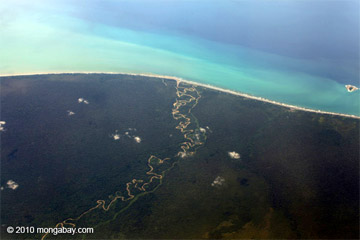 Lowland forest in West Papua, Indonesian New Guinea. Photo by Rhett Butler. |
A prominent voice in the discussion around REDD since its inception is the environmental activist group Greenpeace, which has issued several reports warning of the dangers of an inadequately designed REDD mechanism, including undermining incentives for clean energy development by reducing the price of carbon offsets and potentially subsidizing industrial activities in forests, including plantation forestry and logging. Mongabay recently caught up with Roman Czebiniak, Greenpeace International’s Political Advisor on Climate Change and Forests, for an update on the organization’s position on REDD as well as recent developments in the forest carbon policy arena.
AN INTERVIEW WITH GREENPEACE’S ROMAN CZEBINIAK
 Roman Czebiniak |
mongabay.com: Does Greenpeace see any positive developments arising out of the REDD text from Durban?
Roman Czebiniak: No. Rather than providing necessary guidance and security to civil society, donors, and investors, on how best to meet the Cancun Agreement on Reducing Emissions from Deforestation and Forest Degradation (REDD) objective to “slow, halt and reverse” deforestation in a socially responsible way, the decisions adopted in Durban increased the environmental and social risks associated with the Cancun objective on REDD. Rather than protecting the rights of the people responsible for protecting the forest, the Durban decisions opened the door for irresponsible companies who profit from forest destruction. An entire year’s worth of negotiations was wasted.
mongabay.com: In a statement issued by WWF during the Durban talks, you expressed concerns about REDD and plantations. Does the current text leave open the possibility that REDD could fund conversion of primary rainforests for industrial plantations?
Roman Czebiniak: No. However, the decisions in Durban increased the risk of this being allowed in the future.
The joint statement in Durban made by WWF, CARE, and Greenpeace came in the wake of the first week’s negotiations (ie SBSTA), which weakened vital safeguards and opened the door to the potential use of projected reference levels. We know that indigenous peoples territories often offer better protection for forests than strict conservation areas. We also know that projected reference levels could allow countries to be compensated while continuing or even increasing, their deforestation or degradation rates. Consequently, our collective organizations were aghast at these decisions and the way the negotiations were heading.
I am proud of the quick and collective action we took on this issue, and fortunately, it appears that the harsh reaction by civil society members to the week one (SBSTA) decisions precipitated stronger links in week two between the (LCA) REDD financing decision and the original safeguards adopted in Cancun. This doesn’t make up for the earlier loathsome decisions, but at least we were able to stop the bleeding. As a result, the Cancun safeguard that strictly prohibits REDD financing the conversion of forests into plantations remains firmly on the books. But there are no guarantees that it will stay that way.
mongabay.com: To what extent does Greenpeace expect REDD to be dependent on first-time logging of primary forests?
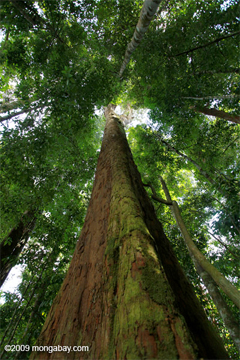 Dipterocarp in Sumatra’s Gunung Leuser National Park. Photo by Rhett Butler. |
Roman Czebiniak: Greenpeace expects REDD to play a role in reducing and ultimately halting first-time logging in intact primary forests. First-time logging often leads to a massive carbon hit, opens the forests to additional drivers and pressure (such as agri-business expansion), and weakens the adaptive nature of intact forests. REDD was created to provide an incentive where one currently does not exist: to leave trees standing. To use REDD funds to incentivize the expansion of a destructive forest activity such as industrial logging (which is already economically viable) would be perverse.
Many countries with tropical forests are among those highly vulnerable to the impacts of climate change. Protecting natural forests is one of the best ways to mitigate climate change, but it also helps ecosystems and people adapt to the changing climate. REDD should provide simple and effective incentives for countries to keep their natural forests intact and free from industrial exploitation.
mongabay.com: Is Greenpeace concerned about REDD potentially subsidizing degradation of these forests?
Roman Czebiniak: Yes. REDD initially garnered significant public support since it was viewed as an effort to protect what little intact tropical rainforests we have left on this planet. One item that was so damaging in Durban is that nearly 8 years of emerging consensus on basing REDD progress on historical data – or what I like to call reality – instead of inflated projections nearly vanished. Instead of a simple and transparent scheme that incentivized countries with high historic rates of deforestation to reduce them, and those with low historic rates to protect their forests at historic levels, the door was open for countries to claim reductions from speculation instead of facts.
Countries can now claim that REDD will reduce emissions which haven’t yet happened and which may never happen, regardless of REDD policy intervention. This can lead to situations where REDD is not only failing to reduce deforestation and degradation, but where funding is actually being used to subsidize the continued destruction of natural forests by the logging and plantation industries.
To the extent that formal REDD policies currently being developed by the UNFCCC, Australia, Japan, California etc. may not only fail to promote the Cancun objective to “slow, halt, and reverse” deforestation and degradation, but provide some means by which it could be undermined, the programs should be abandoned in exchange for a simple and effective incentive scheme. I remain an optimist, but Durban definitely put a dart in my optimism.
mongabay.com: How does Greenpeace view the issue of national and subnational REDD activities?
Roman Czebiniak: To Greenpeace, the combination for REDD success seems clear: nationwide reductions in deforestation and forest degradation combined with strong safeguards for biodiversity and the rights of indigenous peoples and local communities. I have witnessed the scale of forest destruction and sympathize with those pushing for financing forests regardless of its source.
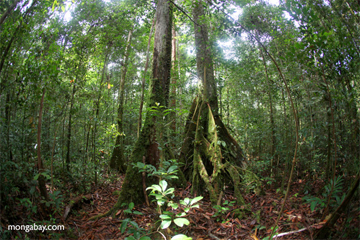 Forest degraded by selective logging in Kalimantan’s Gunung Palung National Park. Photo by Rhett Butler. |
However, the research out of Stanford and elsewhere shows that sub-national approaches can do more harm than good by creating a disincentive to national action. This is a major lesson from the CDM, which seems to have delayed national action in China on HFCs (among other things). A second lesson is that we should expect markets to act as they always do and deliver a commodity at lowest possible cost. The CDM has dual objectives to provide emission reductions and sustainable development… and its failure to deliver on the latter would seem a prescient lesson for safeguards in REDD.
The Cancun Agreement limited sub-national REDD activities to “interim” measures and only within the confines of a national monitoring program. Numerous independent examinations of sub-national REDD offset projects (including one by Greenpeace) have shown them to be inefficient and ineffective due to the inherent problems of leakage (where drivers of deforestation merely shift from one part of the country to another), non-additionality (where finance is provided to protect an area of rainforest that would have been protected anyway) and impermanence (areas being subsequently destroyed due to fires, infestations and even climate-related impacts). At a minimum, such a REDD program could provide no benefit to the climate. But if sub-national REDD projects were to be included in a carbon offset market, it could make the climate crisis even worse by allowing industries to continue to pollute while not providing real emission reductions in exchange. Something for Californians to consider.
mongabay.com: What is Greenpeace’s position on finance sources for REDD?
 Gold mining in the Peruvian Amazon. Photo by Rhett Butler. |
Roman Czebiniak: Greenpeace has been, and remains, a passionate and vocal advocate for scaled-up finance to help protect the world’s remaining forests and combat climate change. Greenpeace has publicly called for the establishment of a separate forest window under the Green Climate Fund, and has even developed specific REDD Mechanism proposals. We also support a broad range of new sources of genuinely additional finance for REDD (such as taxes and levies, market-linked and hybrid approaches, and the re-direction of subsidies).
But all funding sources are not created equal. Mongabay and others have published on the emission (and ecosystem) impacts of the devastating droughts in the Amazon as well as what the scientific studies show may be in store for such tropical forests as global temperatures continue to rise.
Given that the inadequate voluntary pledges made in Copenhagen would place us on an emissions pathway that could devastate many land areas including tropical forests, Greenpeace has argued that funding for REDD should be directed towards a new global fund (not offset markets) to provide the necessary additional reductions needed to avoid catastrophic climate change and protect these forests.
mongabay.com: What is the current status of accounting for forestry emissions in industrialized countries?
Roman Czebiniak: In the first Kyoto commitment period industrialized countries could choose whether or not to account for Forest Management, but only those who benefited from forest accounting (i.e. those whose forests were absorbing CO2) actually did, leaving significant emissions unaccounted for and providing little or no incentive to improve management. In Durban, all industrialized countries agreed to account for Forest Management emissions for the next commitment period (2013+).
Mandatory Forest Management accounting should have been a major step towards addressing the lack of incentive for improving forest management in temperate and boreal forests. However, countries also agreed to set their own reference levels on which they assess whether forests are emitting or sequestering CO2. Forest emissions will therefore will likely be significantly under estimated and in some cases actual emissions may not be counted at all, as industrialized countries will set reference levels to maximize the offsets that the Forest Management sequestration rules provides them while minimizing the risk that they will have to account for emissions from poor management practices.
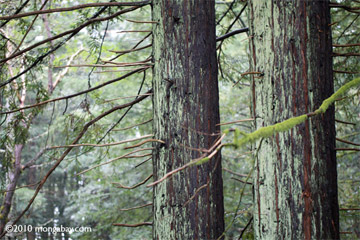 Redwood forest in California. Photo by Rhett Butler. |
LULUCF rules should in principle protect forests and reduce emissions, but in practice loopholes have prevented it from doing the former while any perceived reductions have been used to offset continued pollution from coal and other fossil fuel industries (itself a threat to forests). This is not a model for REDD, and while there are some who want the same rules to apply there are major differences between the two and sound reasons to keep them separate. Most importantly, REDD is a completely voluntary endeavor whereas LULUCF rules apply to countries who have taken on legally binding emission reduction targets. Developing countries can of course use LULUCF accounting should they take on targets similar to those of industrialized countries, but to ask for similar accounting rules in the absence of similar targets is like asking for a tax return without having first paid the tax.
Related articles
REDD advances—slowly—in Durban

(12/15/2011) A program proposed to reduce greenhouse gas emissions from deforestation and degradation made mixed progress during climate talks in Durban. Significant questions remain about financing and safeguards to protect against abuse, say forestry experts. REDD+ aims to reduce deforestation, forest degradation, and peatland destruction in tropical countries. Here, emissions from land use often exceed emissions from transportation and electricity generation. Under the program, industrialized nations would fund conservation projects and improved forest management. While REDD+ offers the potential to simultaneously reduce emissions, conserve biodiversity, maintain other ecosystem services, and help alleviate rural poverty, concerns over potential adverse impacts have plagued the program since its conception.
Community mapping of African rainforests could show way forward for preservation, REDD
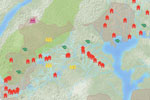
(12/01/2011) A new initiative to place community mapping of central African rainforests online could prove key to local rights in the region, says the UK-based NGO Rainforest Foundation. Working with forest communities in five African countries, Rainforest Foundation has helped create digital maps of local forests, including use areas, parks, and threats such as logging and mining. The website, MappingForRights.org, includes interactive maps, photos, and video.
Should public or private money finance efforts to save forests?

(10/11/2011) The 11th Rights and Resources Initiative Dialogue on Forests, Governance and Climate Change in London, which will focus on The Status and Role of Public and Private Finance to Reduce Forest Loss and Degradation. The goal of the RRI Dialogue is to examine the current state of public and private financial mechanisms for REDD+ and adaptation and contribute to developing an updated vision for the optimal design and deployment of finance to reduce forest loss and degradation – while respecting the rights and development needs of local people. RRI has partnered with Mongabay.com to present two diverging viewpoints on issues to be discussed at length at the dialogue, featuring Vicky Tauli-Corpuz (Executive Director, Tebtebba) and Scott Poynton (Executive Director, The Forest Trust).
A modest proposal for wealthy countries to reforest their land for the common good
(08/11/2011) The Coalition of Financially Challenged Countries with Lots of Trees, known as “CoFCCLoT”, representing most of the world’s remaining tropical forests is asking wealthy nations to share global responsibilities and reforest their land for the common good of stabilizing climate and protecting biodiversity.
REDD must address corruption to save rainforests in Indonesia, says report

(01/13/2010) The Indonesian government squandered billions of dollars in funds set aside for reforestation through corruption and mismanagement in the 1990s, raising important questions as the country prepares for the influx of money from a proposed climate change mitigation scheme known as REDD+ (reduced emissions from deforestation and degradation), warns a new report released Tuesday by the Center for International Forestry Research (CIFOR), a forest policy research group.
Are we on the brink of saving rainforests?

(07/22/2009) Until now saving rainforests seemed like an impossible mission. But the world is now warming to the idea that a proposed solution to help address climate change could offer a new way to unlock the value of forest without cutting it down.Deep in the Brazilian Amazon, members of the Surui tribe are developing a scheme that will reward them for protecting their rainforest home from encroachment by ranchers and illegal loggers. The project, initiated by the Surui themselves, will bring jobs as park guards and deliver health clinics, computers, and schools that will help youths retain traditional knowledge and cultural ties to the forest. Surprisingly, the states of California, Wisconsin and Illinois may finance the endeavor as part of their climate change mitigation programs.